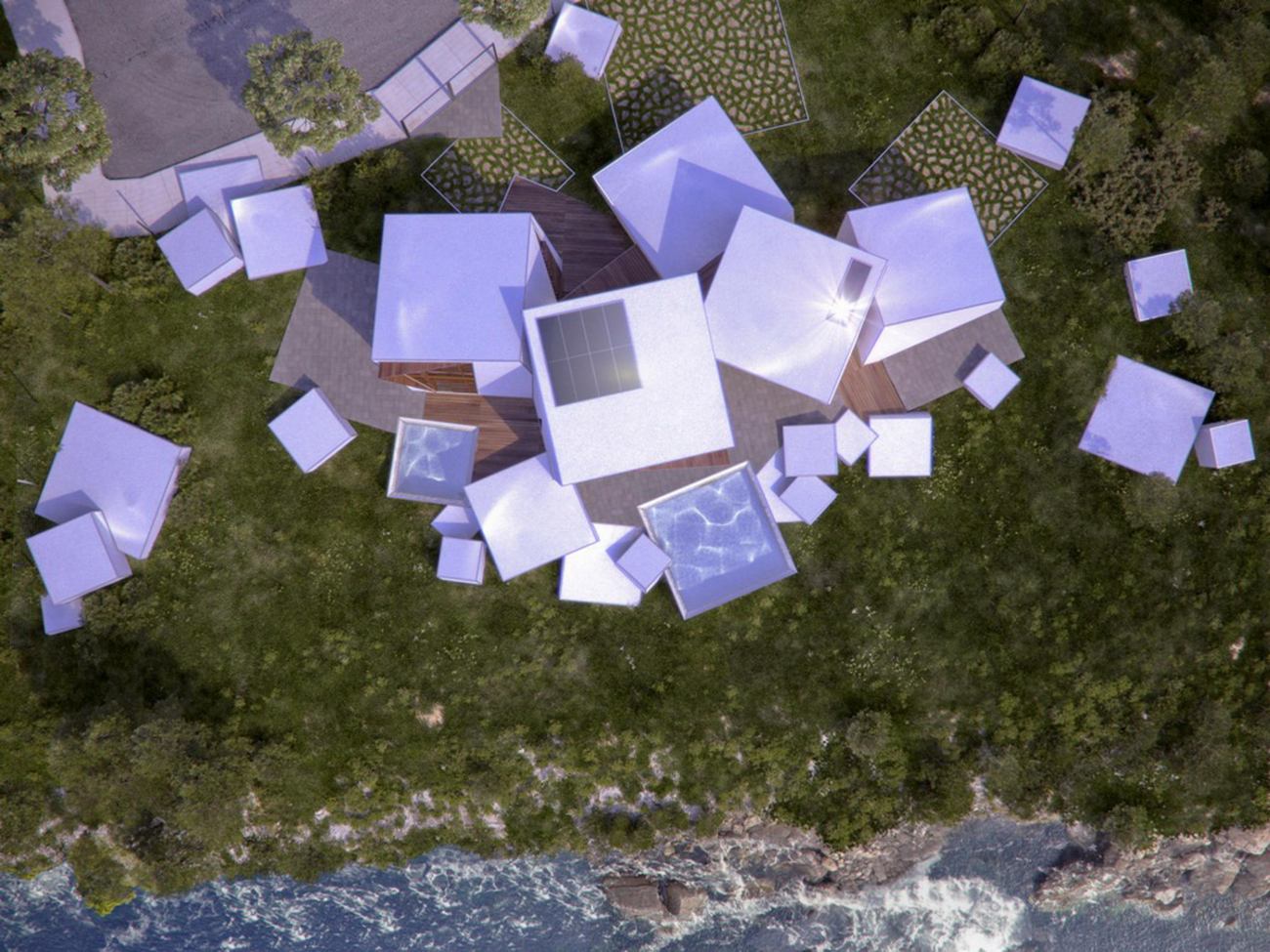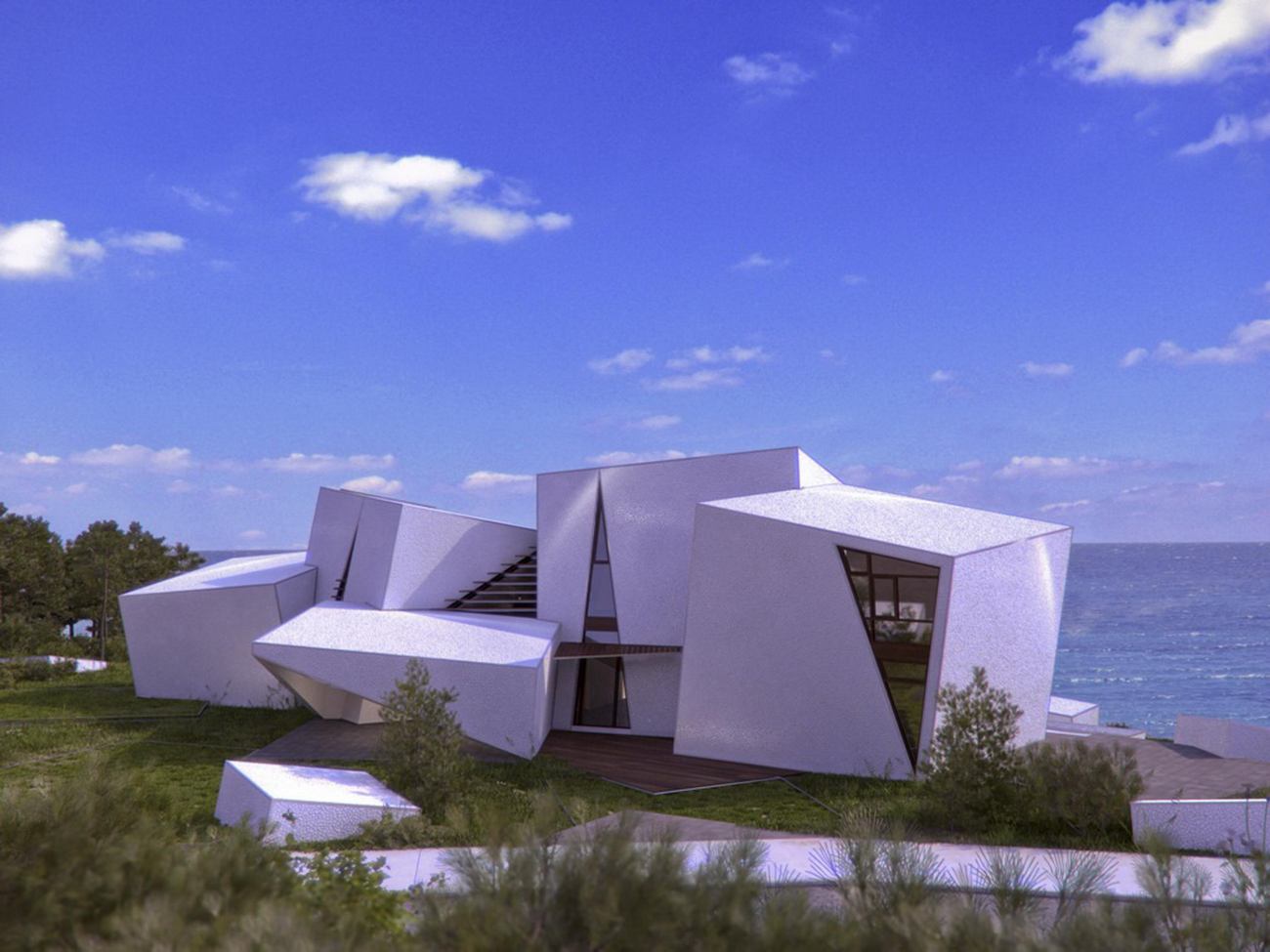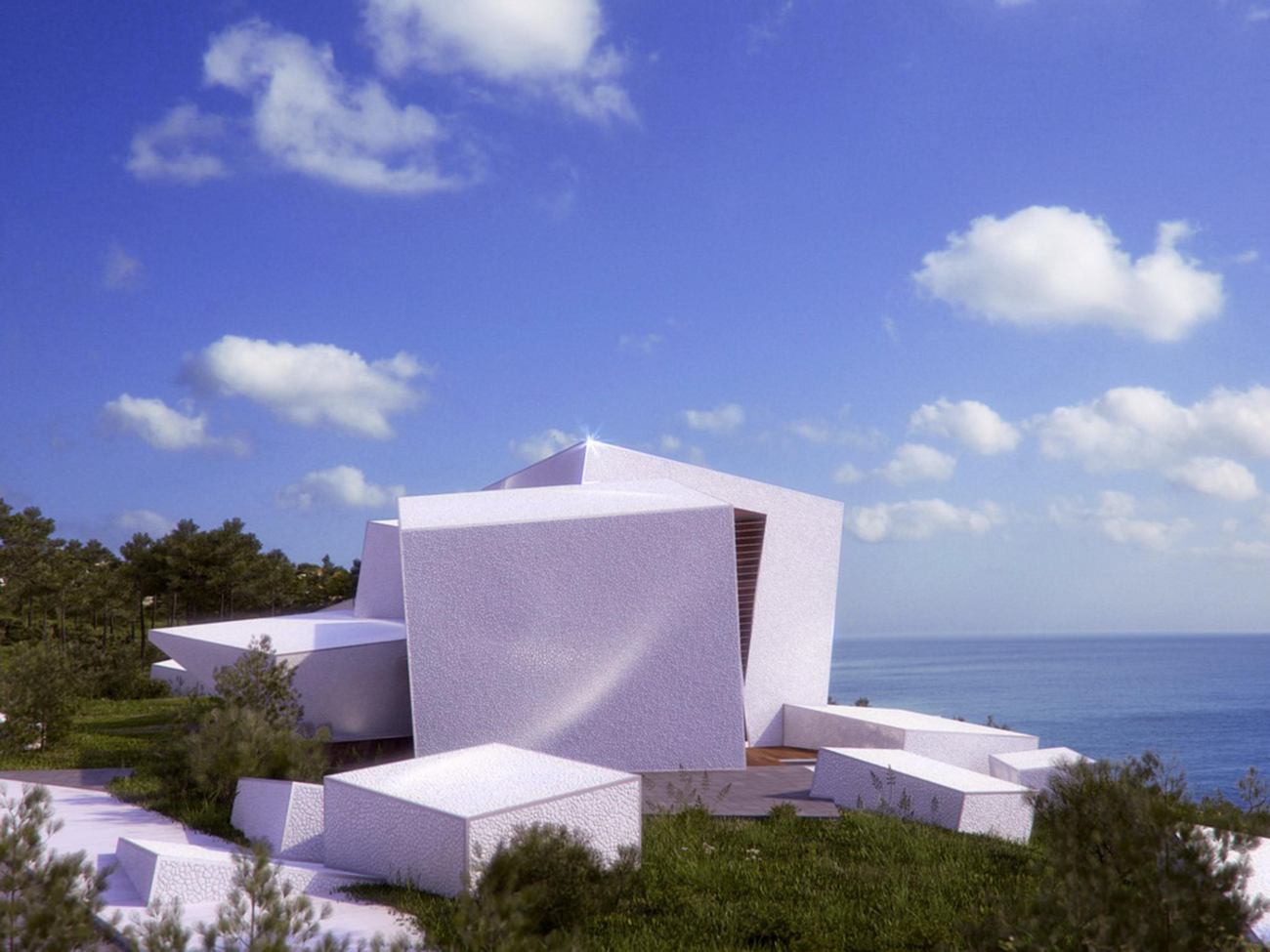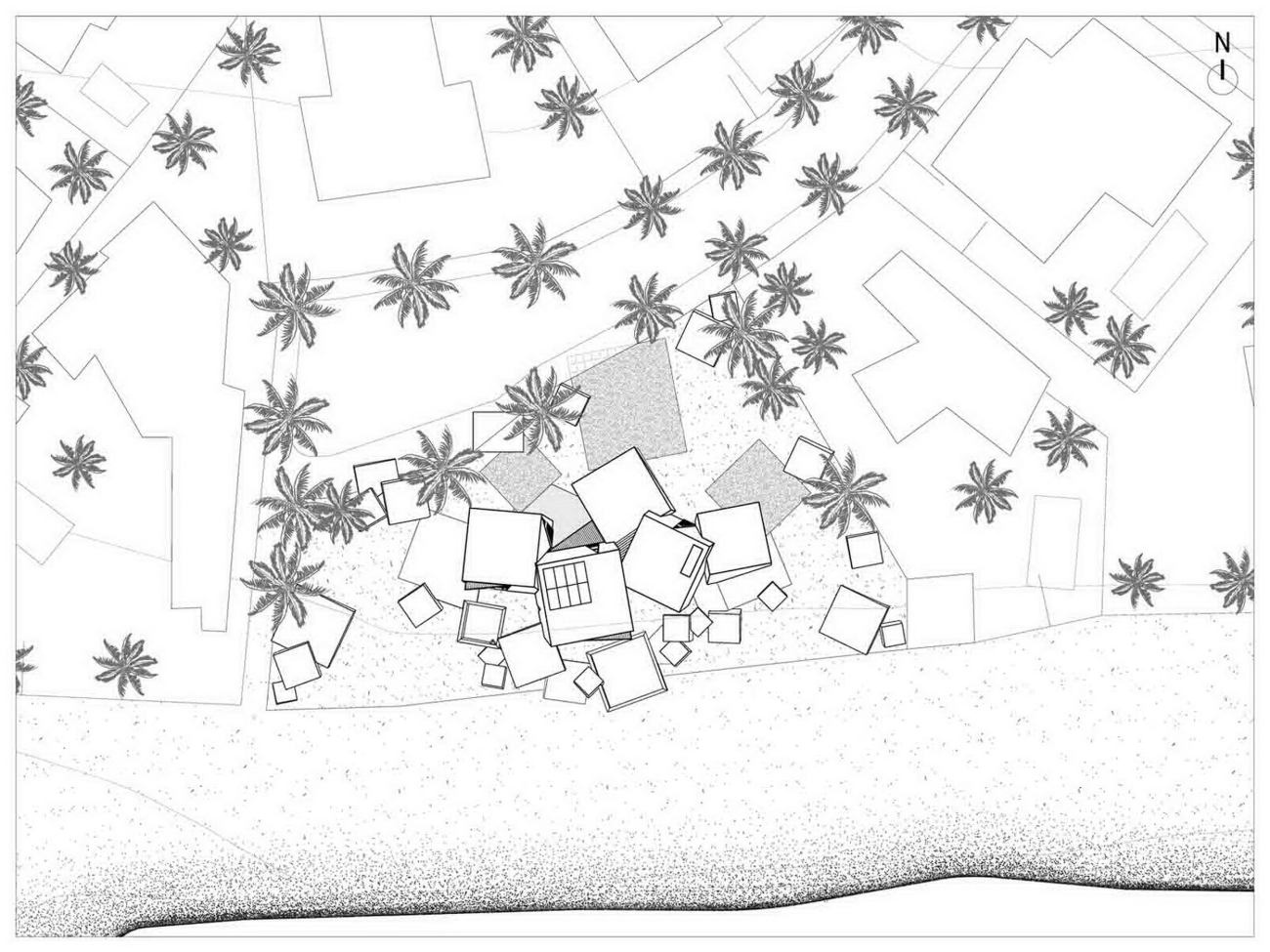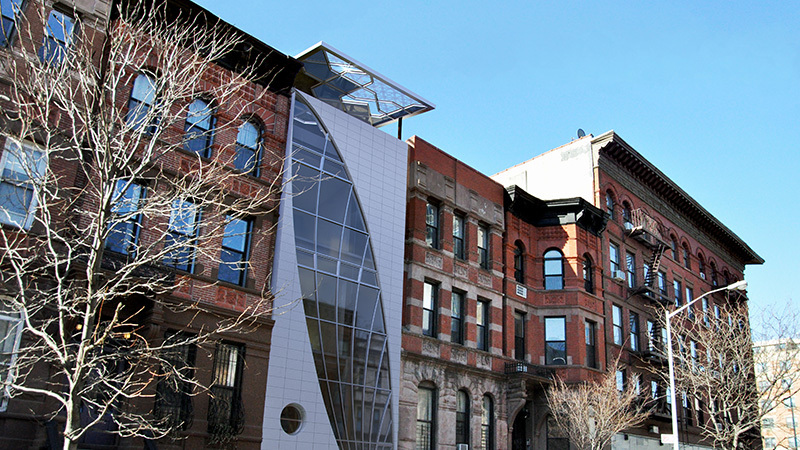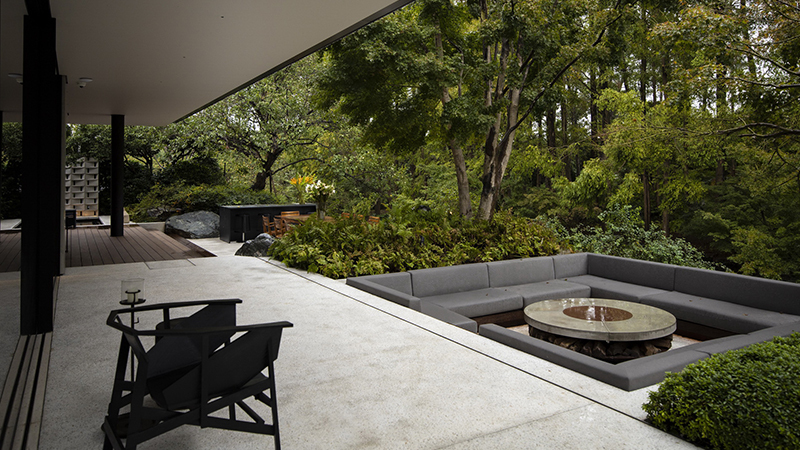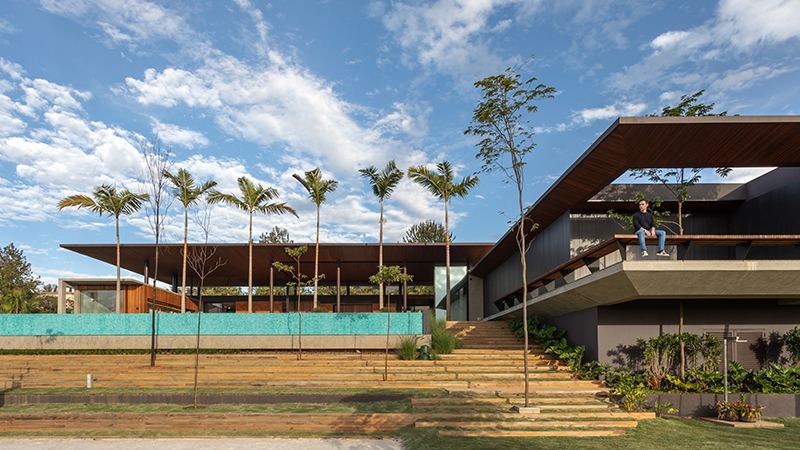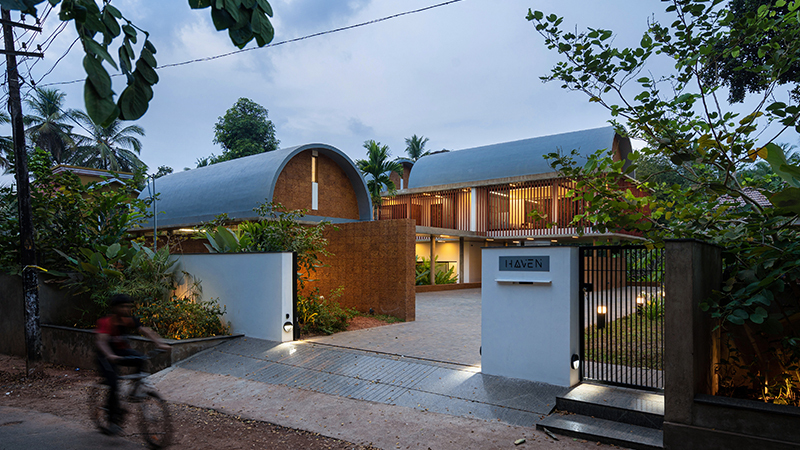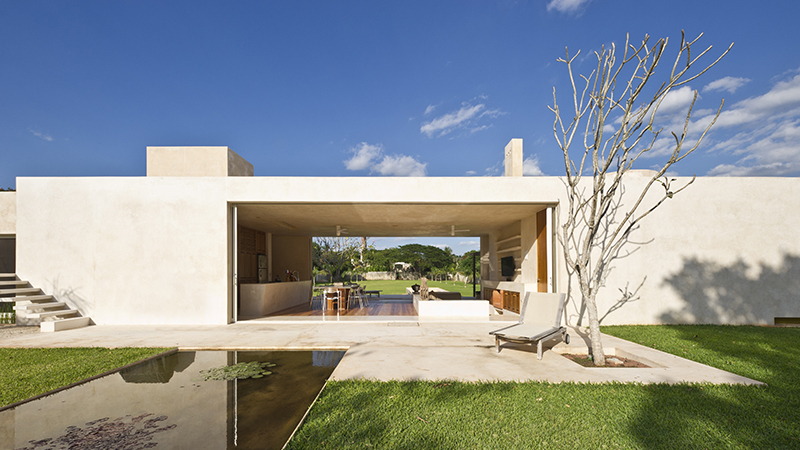| 公司: | Luis De Garrido | 类型: | 建筑 |
|---|---|---|---|
| 地区: | 西班牙 | 标签: | 别墅私宅 |
NADAL生态房屋(NADAL Eco-House)是 Luis De Garrido 的顶级杰作,也是建筑史上的一个转折点,因为它开辟了理解建筑环境的新方式和一种新的建筑结构。
Without a doubt, the outstanding design of NADAL Eco-House is Luis De Garrido's top masterwork, and a turning point in the history of architecture, as it opens up a new way of understanding the built environment and a new architectural syntax.
Luis De Garrido 使用了多达17个不同的网格构架,以象征有组织的混乱力量。乍看之下,建筑的不同体量看似杂乱无章,实则形成了一个和谐的整体,吸引了观者的注意力,邀请人们分析房屋的结构,并享受其中。
Luis De Garrido has used up to 17 different composing grid networks, in order to symbolize the strength of organized chaos. At first glance the different volumes of the house seem to be arranged in a chaotic way, however it is not, the whole forms a harmonious whole that retains the attention of the viewer and invites to analyze the compositional secrets of the house and enjoy with it.
建筑解决方案Architectural Solution
Nadal生态屋位于西班牙马略卡岛海岸,距地中海仅数米远的优越位置。业主希望拥有最大程度的隐私,同时以尽可能保持与自然最融洽的方式相处。因此他们的房屋需要实现能源上的自给自足,能够随时产生所需的能量、水和食物。
Nadal Eco-House is located in a privileged place a few meters from the Mediterranean Sea, on the coast of Mallorca, Spain. The owners wish to have the maximum level of privacy, and at the same time to live in the most integrated way possible with Nature. That is why their house must be completely self-sufficient, and therefore capable of generating the energy, water and food they may need at all times.
建筑共有3层。地下一层设有污水、灰水和雨水处理设施和食品储藏室。一楼包含客厅、餐厅、厨房、两间卧室、三间浴室、车库、游戏室和几个供灵活使用的房间。二层设有主卧、两间客房、两间浴室和一间多功能室。房屋是东西向,以便在冬季最大限度地利用自然光,到夏季时又能提供最有效的防晒。
The house has 3 levels. On the basement floor are located sewage treatment facilities, gray water and rainwater, and food storage rooms. On the ground floor are the living room, dining room, kitchen, two bedrooms, three bathrooms, garage, games room, and several rooms for flexible use. On the first floor is the master bedroom, two guest bedrooms, two bathrooms and a multipurpose room. The house is located east-west in order to maximize solar radiation in winter, and to be able to provide the most effective sun protection in summer.
房屋的特殊建筑结构使其能够在一年中的每一天自我调节热量,保持稳定的室内温度,无需使用机械调节装置。为了在冬季产生热量,在夏季产生新鲜空气,建筑通过窗户、大门和滑动面板自行重新配置。
The special architectural structure of the house allows it to be self-regulated thermally every day of the year, maintaining a stable interior temperature, without the need to use mechanical conditioning devices. To behave properly both in winter (generating heat by itself) and in summer (generating fresh by itself) the house is able to reconfigure architecturally by itself in a very simply way(through windows, gates and sliding panels).
水源自给自足Water self-sufficiency
Nadal Eco-House 的水源也是自给自足的。无需连接到市政供水系统。住户使用和灌溉所需的水来自几个互补的来源:
1. 地下水。为了从地下含水层中获取水,已经在地下进行了钻孔,这些水可以直接用于灌溉。
2. 雨水。落在住宅屋顶上的雨水被收集并输送到地下沉积物。
地下水与雨水混合后储存在一个容量为15000升的地埋罐中,然后通过紫外线照射系统进行过滤和消毒。为饮用考虑,产生的水通过三重膜反渗透系统(通过电子处理器调节产生的水的特性)进一步处理,能够从水中去除细菌(由于小孔尺寸)。产生的水具有与矿泉水相同的纯度和含量。最重要的是,用户可以随时选择矿物质含量,只需重新编程处理器即可。
Nadal Eco-House is self-sufficient in water. That is, you do not need to be connected to municipal water supply systems. The water needed for human consumption and for irrigation is obtained from several complementary sources:
1. Groundwater. A drilling has been carried out in the ground in order to obtain water from underground aquifers, which can be used directly for irrigation.
2. Rainwater. The rainwater that falls on the roofs of the dwelling is collected and carried to an underground deposit.
The groundwater is mixed with rainwater and stored in a buried tank with a capacity of15,000 liters, and then filtered and disinfected by means of an ultraviolet radiation system. To be potable and drinkable, the resulting water is further treated by means of a triple membrane reverse osmosis system (which regulates the characteristics of the resulting water by means of an electronic processor), able to remove bacteria from the water (due to Small pore size). The resulting water has the same purity and content as mineral water. To top it off, the user can choose the mineral content at all times, simply by reprogramming the processor.
3.回收灰水。房屋产生的灰水经过过滤,并通过机械氧化系统和天然泻湖系统进行处理。由此获得的水与来自含水层的水和雨水混合,用作果园和花园的灌溉。
4.污水的回收利用。污水经过黑色过滤井处理,用于生物园堆肥。
3. Recycling gray water. The gray waters generated by the house are filtered, and are treated by means of a mechanical oxygenation system, and a natural lagooning system. The water thus obtained is mixed with water from aquifers and rainwater, and is used as irrigation for orchards and gardens.
4. Recycling of sewage. The sewage is treated by means of a black filtration well, and they are used to make compost for the biological orchards.
能源自给自足Energy self-sufficiency
住房是自给自足的能源。也就是说,您不需要连接到电源。这种能源自给自足是通过一系列互补战略实现的:房子的居住者意识到采用一种自然而简单的生活方式,避免能源浪费,并且被器物和文物所包围是必要的。建筑经过优化的生物气候设计,以最大限度地减少对能源的需求。在房屋的设计中,采用了各种生物气候策略,以确保它一年中的每一天都消耗最少的能源、自然照明、自然通风和热量自我调节。由于其特殊的设计,房子在夏天自己降温,在冬天自己取暖。同样,建筑物在白天自然照明,一年中的每一天,无需人工灯具。
Housing is self-sufficient energy. That is, you do not need to be connected to the mains. This energy self-sufficiency has been achieved through a set of complementary strategies: The occupants of the house are aware of adopting a natural and simple way of life, avoiding energy waste, and surrounded by utensils and artifacts simply necessary. Optimum bioclimatic design has been made to minimize the need for energy. In the design of the house, all kinds of bioclimatic strategies have been used to ensure that it consumes the least amount of energy, is naturally illuminated, naturally ventilated, and thermally self-regulated, every day of the year. As a result of its special design, the house cools itself in summer, and heats itself in winter. In the same way, during the day the building is naturally illuminated, every day of the year, without the need for artificial luminaires.
▽房屋冬夏热量自我调节示意
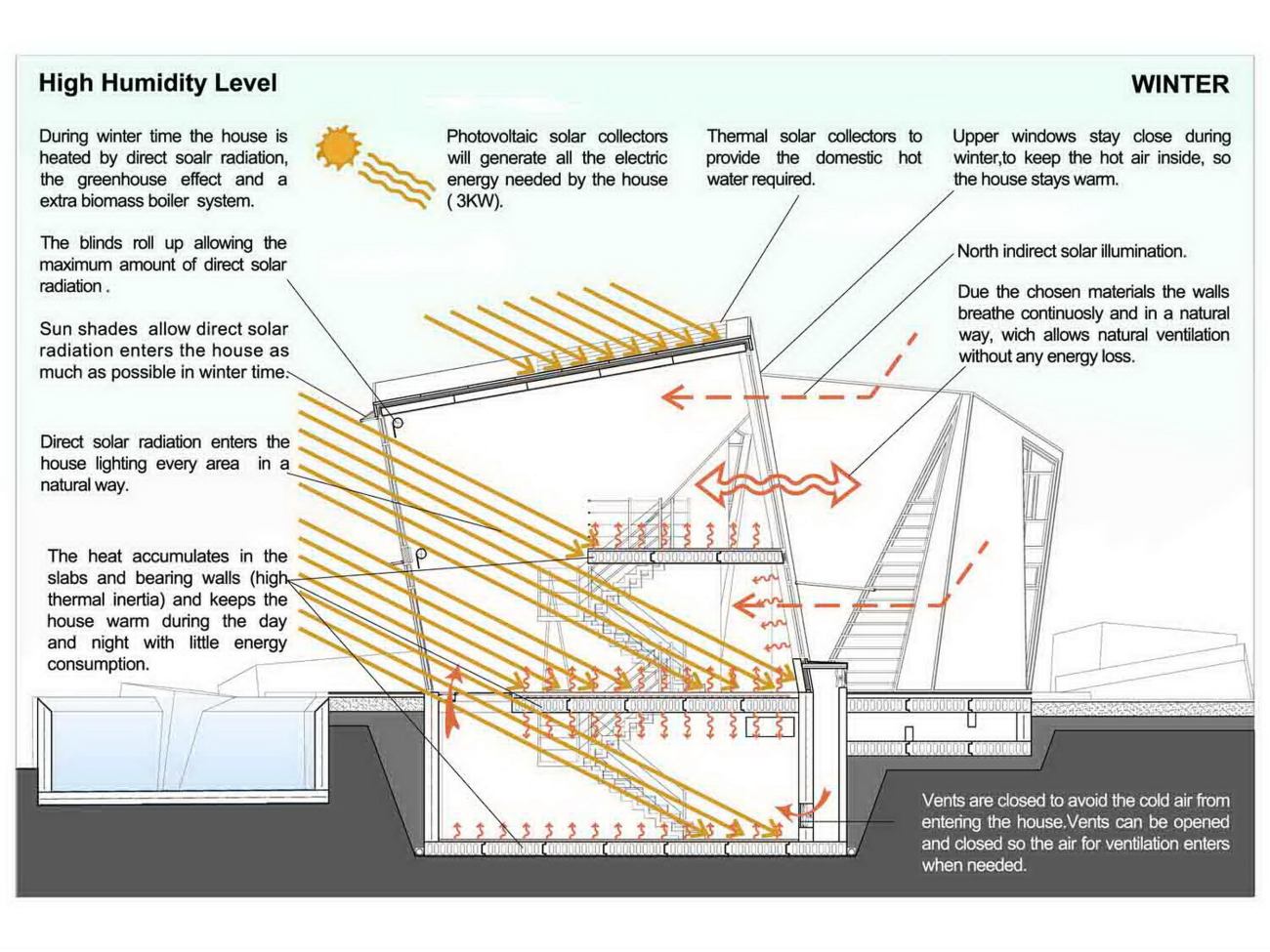 |  |
建筑物中只安装了必要的电器,这些电器的耗电量也非常低。已经使用了基于具有非常低能耗的发光OLED的人工照明系统。厨房和冰箱使用牲畜有机物残渣发酵产生的沼气。他们还为特定情况配备了应急光伏电力系统。建筑还纳入了光伏系统以产生家庭所需的少量电能(5,000 瓦)。光伏太阳能电池板已集成到一些住房模块的倾斜屋顶中。光伏电池板产生的电能采用寿命超长的电池进行存储,随时可用。一组太阳能热板集成在建筑的倾斜屋顶中,用于产生房屋所需的卫生热水和游泳池的热水。
Only essential appliances have been incorporated in the building, which are also of very low electrical consumption. Artificial lighting systems based on luminescent oleds with very low energy consumption have been used. The kitchen and the refrigerator are fed with biogas generated by the fermentation of residues of organic matter from livestock. They also have an emergency photovoltaic electrical system, for specific cases. A photovoltaic system has been incorporated to generate the little electric energy that the home needs (5,000 watts). Photovoltaic solar panels have been integrated into the sloped roofs of some housing modules. In addition, a set of state-of-the-art electrical batteries, of great duration, and capable of storing the electrical energy generated by the photovoltaic panels, have been available. A set of solar thermal panels, integrated in the sloped roofs of some modules of the house, have been incorporated to generate the sanitary hot water that needs the housing and the hot water of the swimming pools.
▽项目位置
食物自给自足Food self-sufficiency
这所房子设有几个生态种植园,为居住者提供基本食物。马略卡岛的地中海气候使得谷物、豆类水果和蔬菜一年可以种植多种作物。耕地足以养活房屋的居住者以及处置的小农场的动物。需要注意的是,废水用于花园和花园的堆肥,借助生物质锅炉产生的灰烬,以及位于房屋外的堆肥机。
The house has several biological gardens, which provide basic food to its occupants. The Mediterranean climate of Mallorca allows several crops a year of cereals, legumes fruits and vegetables. And the arable land is more than enough to feed the occupants of the house, and the animals of the small farm that disposes. It should be noted that the wastewater is used to generate compost for the garden and garden, with the help of the ashes generated by the biomass boiler, and a composter located outside the house.
▽总平面图
预制结构体系Prefabricated structural system
房屋的结构由钢筋混凝土板制成,可以完全拆除,以便于维修或重新使用其所有组件,包括结构本身。
The structure of the house has been made of reinforced concrete panels, which allows the total dismantling of the house, in order to facilitate the repair or reuse of all its components, including the structure itself.
▽分层平面图
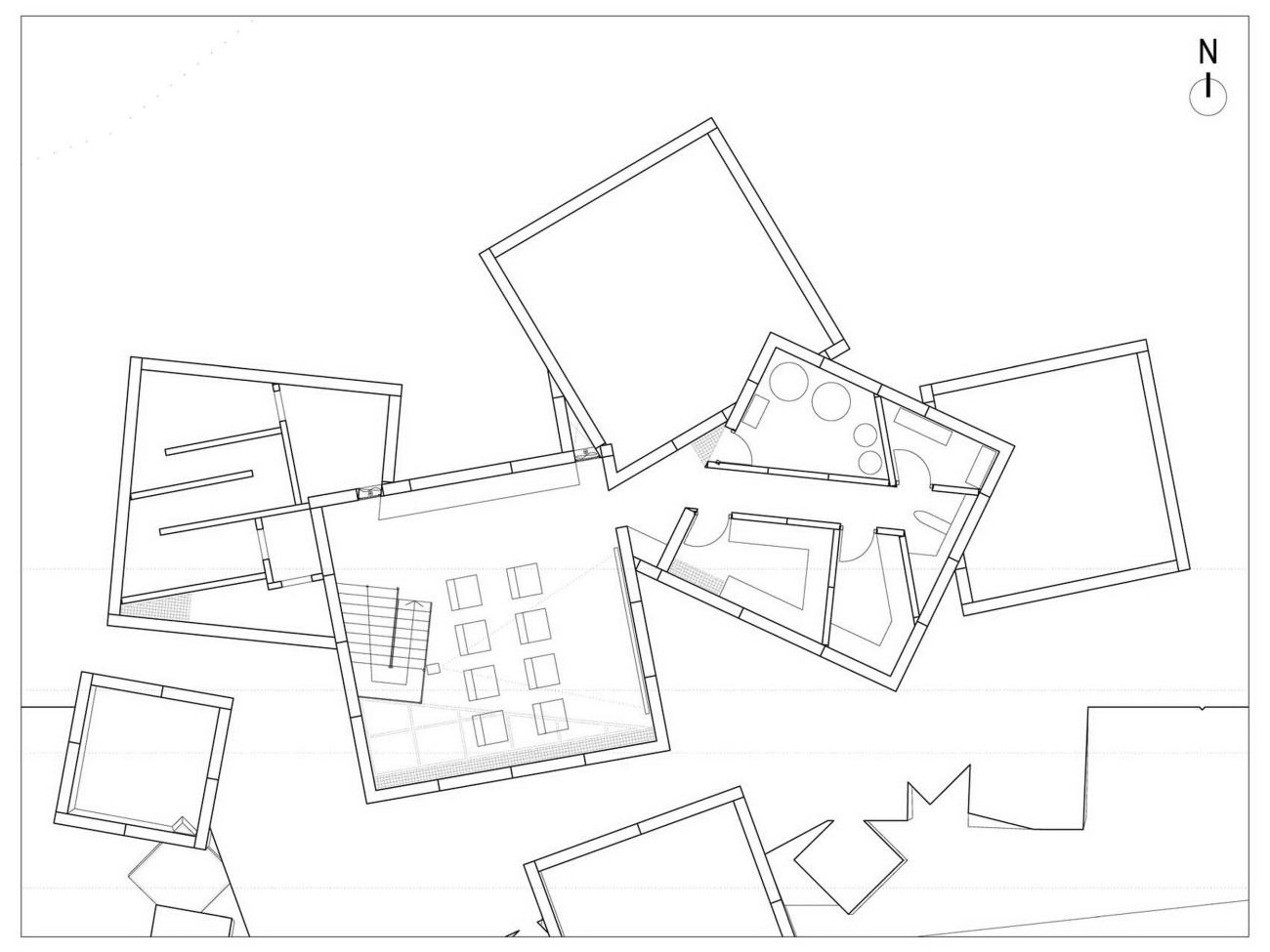 |  |
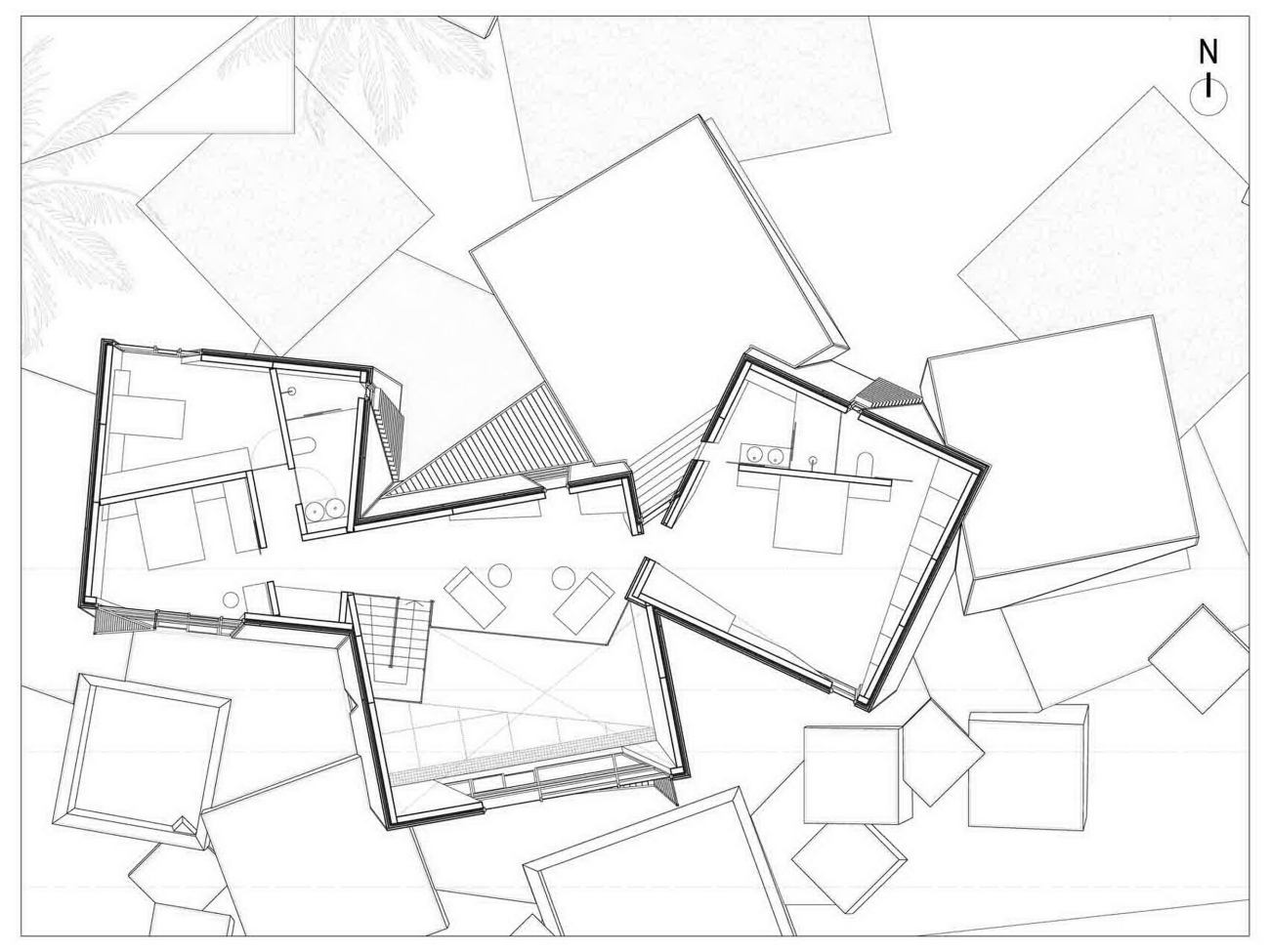 |  |
高生物气候水平High bioclimatic level
由于其先进的建筑设计,房屋能够自我调节热量,保持恒定的室内温度,能够确保其居住者的最大舒适度和幸福感。房子内部保持稳定的温度,一年中的每一天都在24ºC和25ºC之间波动。这就是为什么房子不需要机械加热系统或空调。夏季,南方的室内百叶窗和室外百叶窗部分关闭,住宅由来自北方的间接太阳辐射照明(因此它是自然照明但不加热)。然而在冬天,南方的百叶窗完全打开,房子变成了一个巨大的温室,充分利用太阳辐射,并自行取暖。
Due to its advanced architectural design, the house is able to self-regulate thermally, maintaining a constant interior temperature, able to ensure maximum comfort and well-being to its occupants. The house maintains a stable temperature in its interior that oscillates between 24º C and 25º C every day of the year. That is why the house does not need mechanical heating systems or air conditioning. In summer, the interior shutters and the exterior shutters of the south are partially closed, and the dwelling is illuminated by indirect solar radiation from the north (thus it is naturally illuminated but not heated). In winter, however, the shutters of the south are completely opened, and the house becomes a huge greenhouse, taking full advantage of solar radiation, and heating itself.
▽冬夏热量自我调节示意
 | 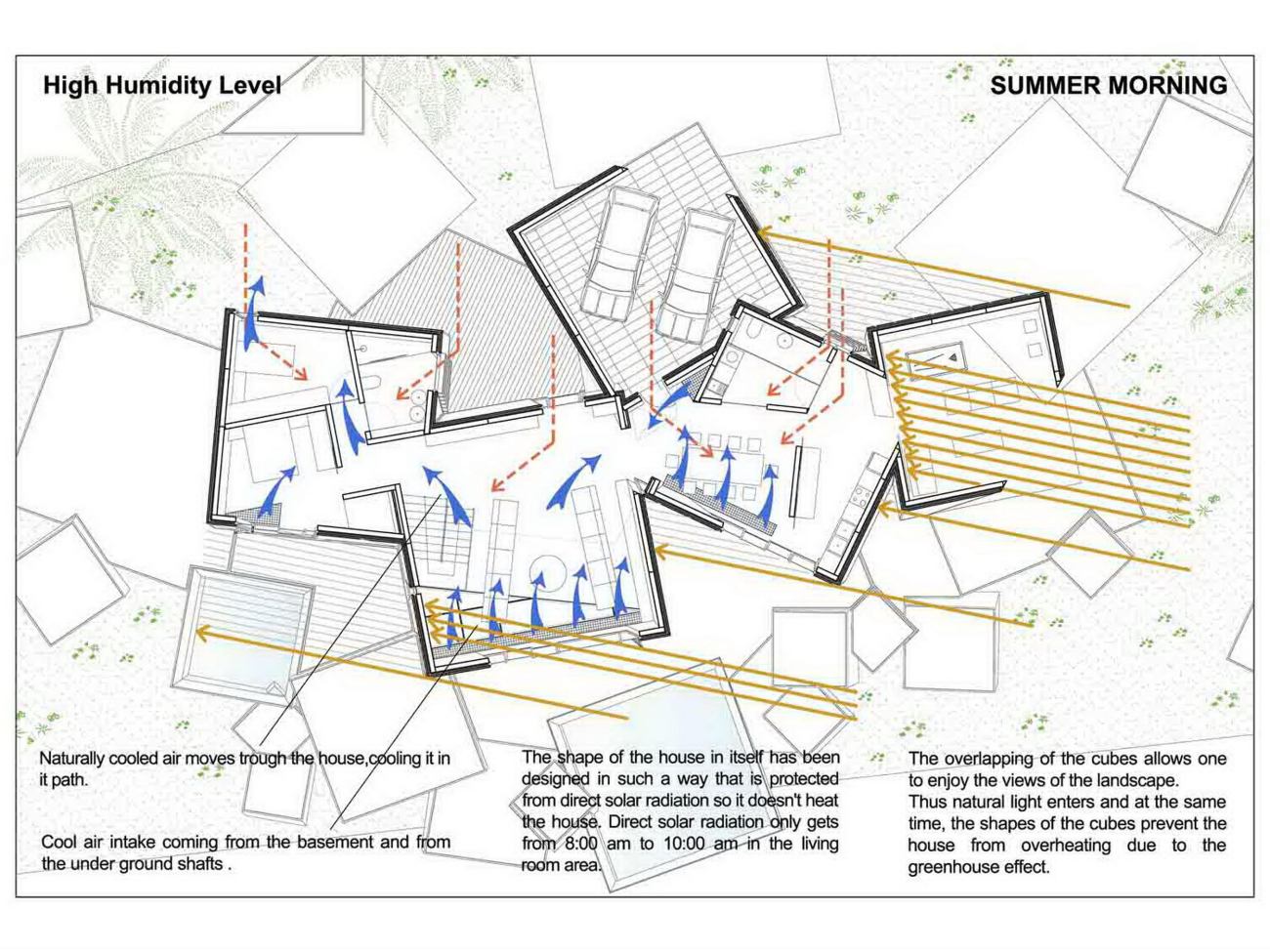 |
综合垃圾处理Integral waste disposal
房屋的建造仅产生的少量残留物,并且已用于建造房屋。建筑对房屋使用过程中产生的有机废物进行优化管理,并用于制造“堆肥”,作为周围果园的肥料。另一方面,污水经过适当处理,也可用于上述果园的施肥。
The house has been built without generating residues, since the few residues generated have been used in the construction of the same. On the other hand, the organic waste that is generated during the use of the house is managed optimally and are used to make "compost" that serves as fertilizer for the surrounding orchards. On the other hand, the sewage is treated properly, and are also used, for fertilization of said orchards.
激发居住者的幸福感和幸福感Stimulate the well-being and happiness of the occupants of the dwelling
从身体、情感和心理的角度来看,这是一套能够保障人民幸福和幸福的普遍模式。这些模式已在卡罗莱纳生态屋的设计中以详尽的方式被考虑在内,从而成为一个模板,能够鼓励和放大其居住者的幸福感。
From a physical, emotional and psychological point of view, a set of general patterns can be identified, capable of guaranteeing the well-being and happiness of the people. These patterns have been taken into account, in an exhaustive way, in the design of Carolina Eco-House, which in this way becomes a sounding board, capable of encouraging and amplifying the happiness of its occupants.
▽立面图
 |  |  |
优点:
1.热稳定性Thermal stability
2.季节性热变化Seasonal thermal variation
3.自然光Natural light
4.技术简单,维护最少Technological simplicity and minimal maintenance
5.天然材料Natural materials
6、简洁不单调的建筑设计Simple and non-monotonous architectural design
7.合适的颜色Appropriate colors
8.安全感和隐私感Sense of security and privacy
9.美丽Beauty
10.无病原体Absence of pathogens
11.透气性(持续自然通风)Breathability (continuous natural ventilation)
12.鼓励人际关系Encourage human relationships
13.自给自足(能源、水、食物)Self-sufficiency (energy, water, food)
▽剖面图
 | 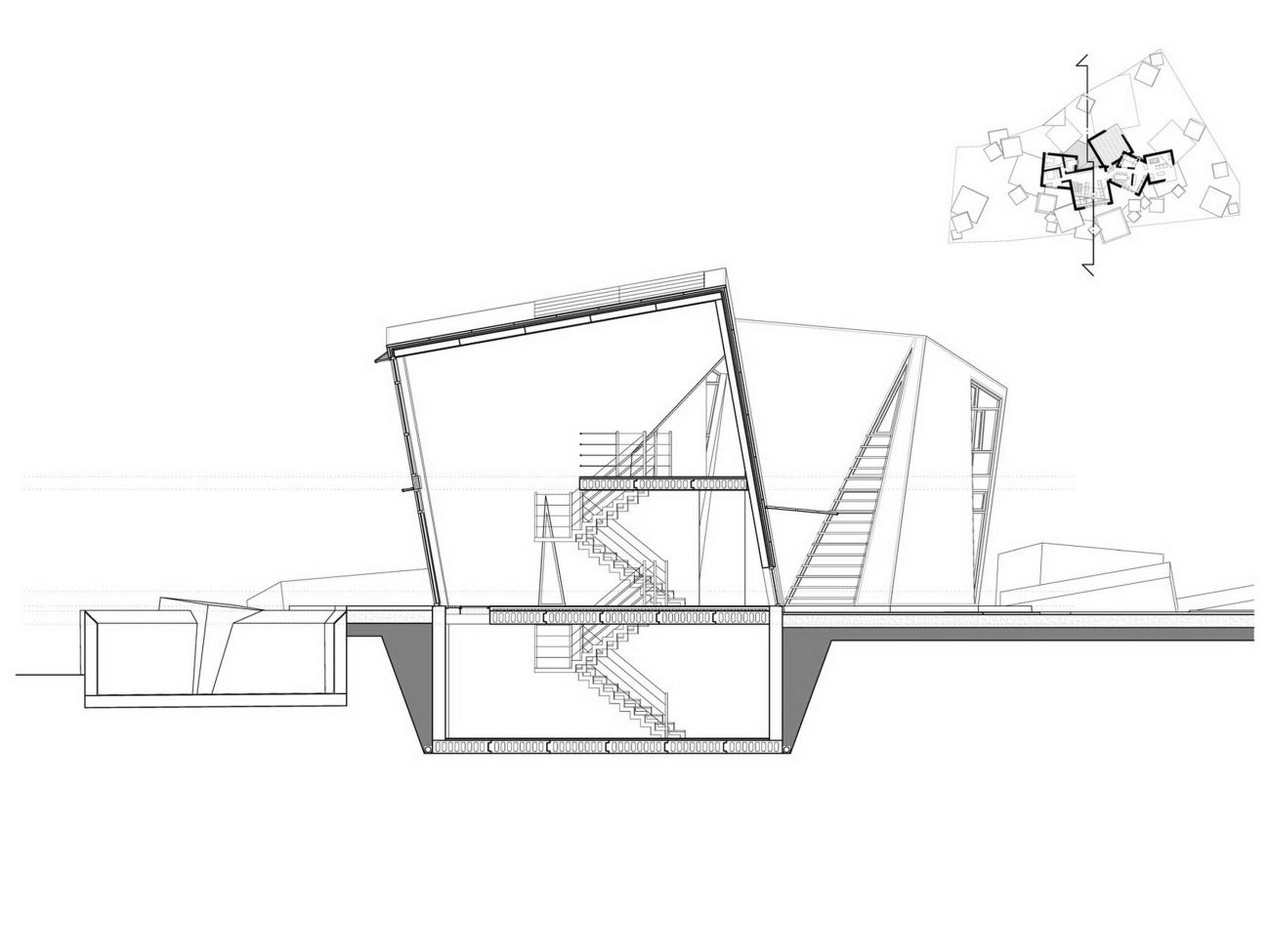 |  |
Project name: NADAL Eco-House
Architecturefirm: LUIS DE GARRIDO Architects
Project location: Mallorca (Spain)
Tools used: 3D Studio Max
Principal architect: Luis De Garrido, Autocad, Photoshop
Builtarea: 487’43 m2
Sitearea: 2.000 m2
Designyear: 2021
Completion year: 2023
Client: Nadal Family
Status: in process
Typology: Aditive chaotic spaces interceonected by mathematical complex compositional rules and geometrical proportions
更新日期:2022-08-10 14:53:34
非常感谢 Luis De Garrido 带来的精彩项目, 查阅更多Appreciations towards Luis De Garrido for sharing wonderful work on hhlloo. Click to see more works!

